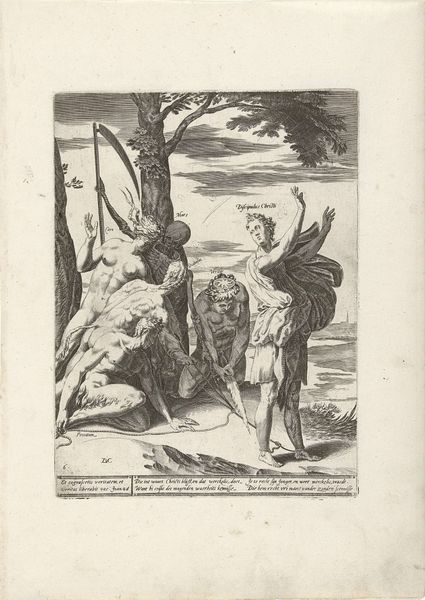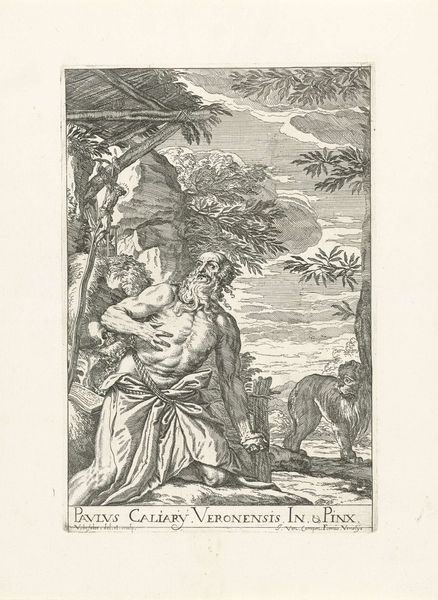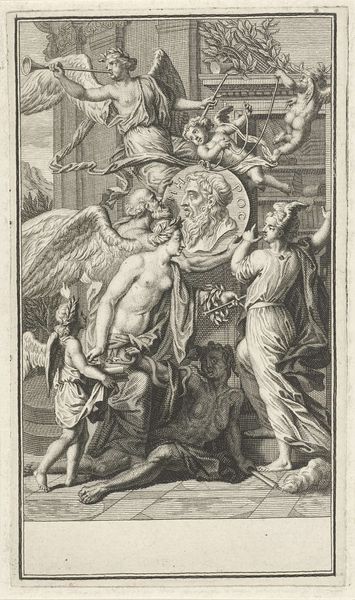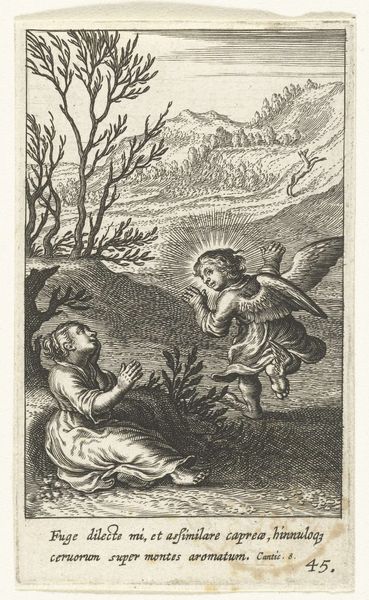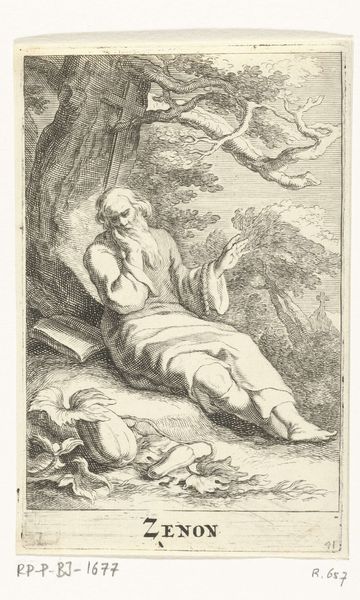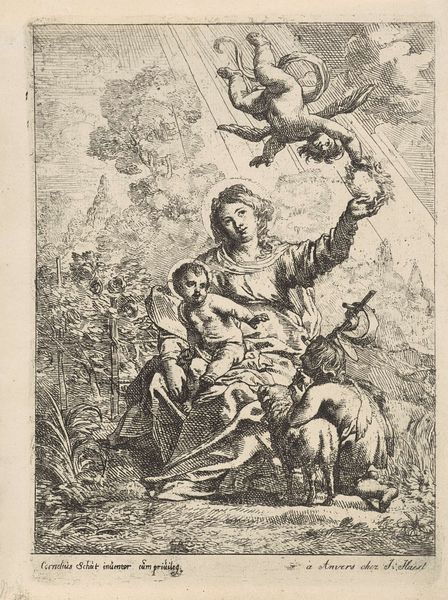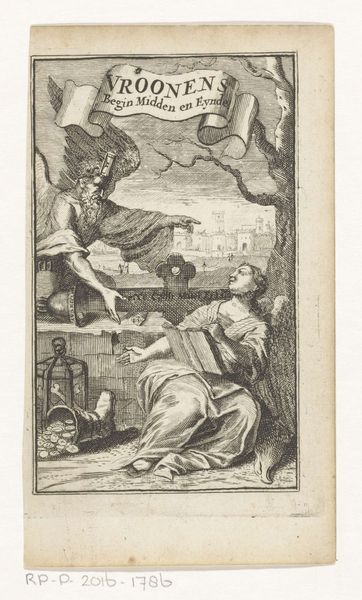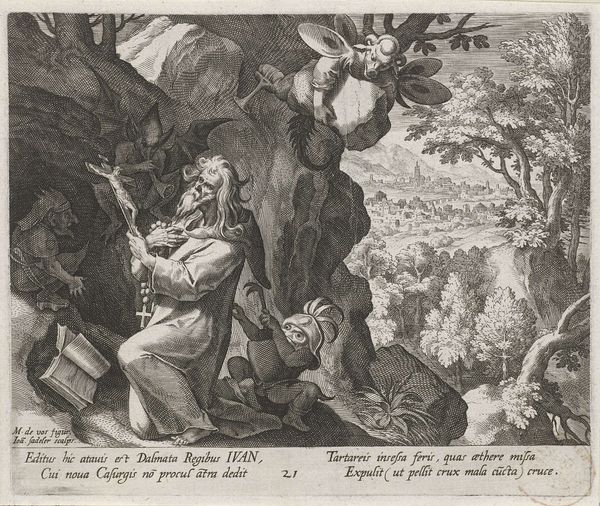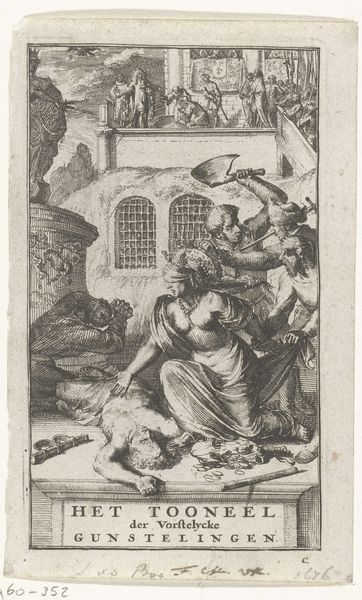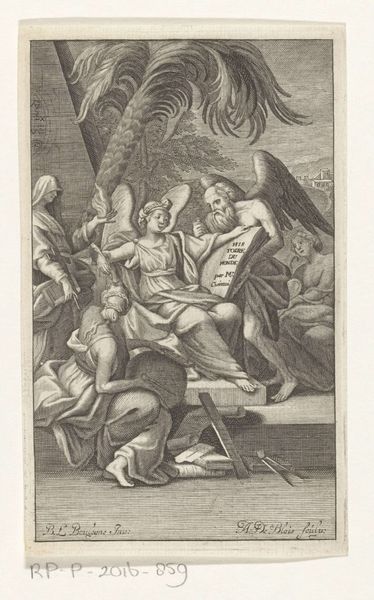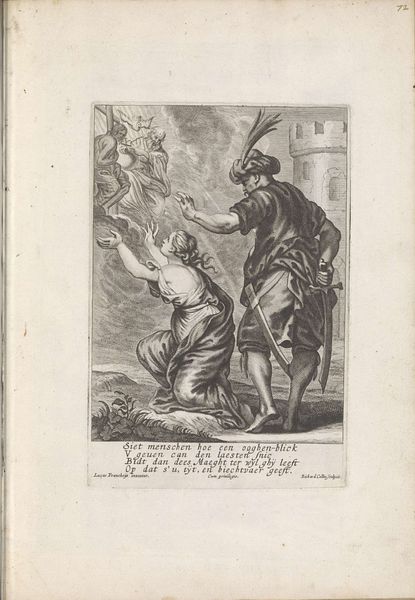
Dimensions: height 250 mm, width 205 mm
Copyright: Rijks Museum: Open Domain
Curator: Looking at this detailed engraving, one immediately notices the tranquility and almost dreamlike state it evokes, despite depicting a potentially dramatic biblical scene. Editor: Ah, yes, that's Johann Sadeler I's "Elia bezocht door een engel in de woestijn," from 1582, housed here at the Rijksmuseum. The subject is the prophet Elijah, sustained by an angel in the wilderness, a common theme reflecting reliance on divine intervention. It speaks to anxieties of the time and faith in higher powers to address them. Curator: The figure of Elijah does look particularly vulnerable, doesn’t he? Asleep, in need, almost childlike under the gentle guidance of the angel, yet something feels archetypal. The angel touching him reminds me of countless similar depictions of healing or intervention across centuries and cultures. The symbol of care, literally rendered. Editor: Precisely. Notice how the composition uses the landscape to frame Elijah’s plight within a larger context, referencing ideas of nature and the natural world. Elijah being cared for also has socio-political parallels to the population being sustained by their monarchies and their associated religious powers. These historical-allegorical contexts allowed it to be seen both for its biblical meaning, as well as its political undertones. Curator: It’s fascinating how printmaking allowed these ideas to spread. Also the details! Did you notice the small turtle by Elijah’s feet? That element adds such symbolic depth. Perhaps something about endurance? Editor: Certainly, such elements are layered with possible meaning. More generally, the act of reproducing images on a massive scale democratized artistic representation, influencing religious beliefs across social strata. The artwork, therefore, serves as a crucial tool to examine the democratization of art for religious messaging during the Baroque period. Curator: Thinking about that broader cultural impact, the scene continues to resonate even today. Beyond religious interpretation, it presents a powerful image of unexpected kindness in times of despair. It’s an incredibly efficient, emotive symbol, speaking to deeply ingrained needs of comfort and assurance. Editor: Indeed. From a historical viewpoint, appreciating Sadeler's print lets us observe the social fabric that encouraged and benefited from religious dissemination during a dynamic point in history, reflecting and solidifying religious belief during the baroque period.
Comments
No comments
Be the first to comment and join the conversation on the ultimate creative platform.
